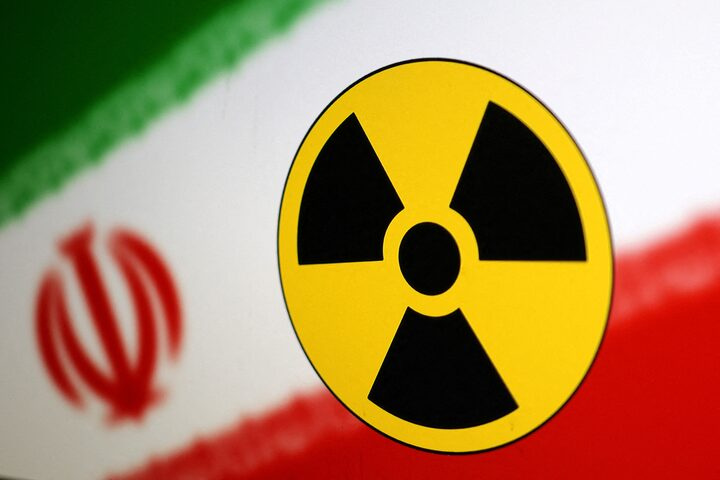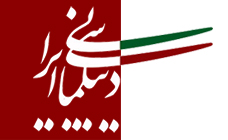Iran Sanctions and the Jurisprudence of Civilian Protection

Sanctions, while formally conceived as non-forcible instruments under Chapter VII of the United Nations Charter, present a paradox within international law. Designed to preserve or restore international peace and security, their operationalization often produces systemic socio-economic deprivation that disproportionately affects civilians, raising serious concerns under human rights law and humanitarian law. This tension is exemplified by the six Security Council resolutions addressing Iran’s nuclear program between 2006 and 2010 (Resolutions 1696, 1737, 1747, 1803, 1835, and 1929). Though framed as targeted measures, their cumulative humanitarian impact extended well beyond the Iranian nuclear or political elite, compromising fundamental rights such as health, education, and livelihood.
Children, as a particularly vulnerable group, bore a disproportionate burden, experiencing severe disruptions in nutrition, access to medicines, pediatric healthcare, and schooling. These outcomes engage both jus cogens norms and treaty-based obligations, including the Convention on the Rights of the Child (CRC), the International Covenant on Economic, Social and Cultural Rights (ICESCR), and core humanitarian principles.
The Snapback mechanism, embedded in Resolution 2231 and the Joint Comprehensive Plan of Action (JCPOA), further amplifies legal and humanitarian concerns. By permitting automatic reinstatement of previously lifted sanctions upon a perceived material breach, Snapback concentrates decisive authority in individual Council members, circumventing collective deliberation and potentially triggering immediate violations of civilian rights, including children’s rights. This article argues that the Security Council’s discretion is legally constrained: even under its Chapter VII mandate, Council actions must respect humanitarian principles, jus cogens norms, and binding treaty obligations. The Iranian sanctions regime demonstrates that, without rigorous safeguards, Security Council measures risk breaching international law by imposing disproportionate and collective harm.
I. The Charter Framework and Legality of Sanctions
Articles 39–41 of the UN Charter authorize the Security Council to impose binding measures in response to threats to international peace. However, the Council’s powers are not unlimited. Article 24(2) mandates that Council actions conform to the “purposes and principles of the United Nations,” including the promotion and protection of human rights. Article 1(3) further embeds human rights considerations as integral to the Council’s remit. The International Court of Justice (ICJ), in Namibia (1971) and Lockerbie (1992), confirmed that the Council’s authority is exercised “in accordance with the Charter,” implying that measures violating jus cogens norms or disproportionately affecting civilians may exceed legal bounds. Scholarly opinion and state practice increasingly support the principle that Council decisions are subject to review, particularly where they infringe human rights or humanitarian law.
II. The Six Security Council Resolutions on Iran
Resolutions 1696, 1737, 1747, 1803, 1835, and 1929 cumulatively established arms embargoes, financial sanctions, travel bans, and technology restrictions. While individually targeted, the aggregate effect created a de facto population-wide deprivation. Civilians faced shortages of essential medicines, disruption of banking systems, and restricted access to technology, affecting daily life, education, and healthcare. Children were disproportionately harmed, with impacts ranging from malnutrition to restricted access to pediatric oncology treatments.
III. Humanitarian Limits under International Law
Sanctions must comply with fundamental principles of international law, including proportionality, necessity, and the prohibition of collective punishment.
1. Proportionality
Proportionality requires that enforcement measures correspond to the threat posed and minimize harm to protected populations. The ICJ, in the Legality of the Threat or Use of Nuclear Weapons Advisory Opinion (1996) and the Gabcíkovo-Nagymaros Project (1997), emphasized that measures inflicting severe civilian deprivation violate international law. Iranian sanctions -particularly cumulative restrictions on medicine and essential services- transgress proportionality by disproportionately harming civilians.
2. Necessity
The principle of necessity limits coercive measures to cases where less intrusive alternatives are insufficient. Broad sanctions applied without rigorous assessment violate this principle. International practice favors targeted “smart sanctions” over comprehensive restrictions, yet in Iran, the transition remained imperfect, exposing civilians to avoidable deprivation.
3. Prohibition of Collective Punishment
Article 33 of the Fourth Geneva Convention prohibits collective punishment, a jus cogens norm. Indiscriminate sanctions that impair entire populations -as observed in Iran- constitute de facto collective punishment. Resulting restrictions undermined the right to health (ICESCR, Art. 12) and right to life (ICCPR, Art. 6), especially for children.
4. Obligations of States Implementing Sanctions
States remain bound by international human rights obligations. The ICJ, in Bosnian Genocide (2007), confirmed that erga omnes obligations limit state conduct, even under Security Council mandates. Humanitarian law thus applies to both the Council and individual member states, ensuring accountability for violations.
5. Soft Law and Interpretative Guidance
UN bodies provide guidance to limit humanitarian harm. CESCR General Comment No. 8 (1997), Guiding Principles on Humanitarian Assistance (1991), and reports of the Special Rapporteur on unilateral coercive measures emphasize the duty to preserve access to food, healthcare, and shelter. Yet overcompliance often renders exemptions ineffective, exacerbating civilian suffering.
6. Impact on Children
The Convention on the Rights of the Child (CRC) guarantees children rights to life (Art. 6), health (Art. 24), and education (Arts. 28–29). Iranian sanctions disrupted access to life-saving pediatric care, nutrition, and schooling, representing direct violations of children’s rights under binding international law.
Collectively, these principles establish rigorous humanitarian limits, requiring:
- Humanitarian impact assessments prior to adoption.
- Accessible and effective exemption mechanisms.
- Narrow, targeted sanctions minimizing systemic civilian harm.
- Continuous monitoring of proportionality, necessity, and child-sensitive safeguards.
The Snapback mechanism exacerbates violations by allowing automatic reinstatement of sanctions without prior assessment of humanitarian consequences, further risking breaches of jus cogens norms.
IV. Jurisprudence and Institutional Practice
Cases such as Al-Dulimi v. Switzerland and the ICJ Advisory Opinion on the Wall affirm the human rights-sensitive application of sanctions. UN sanctions committees and Special Rapporteur reports confirm that foreseeable civilian harm engages both Council and state responsibility. In Iran, predictable shortages of medicines and restricted educational exchanges constitute violations of international humanitarian law and children’s rights.
V. Normative and Doctrinal Implications
The Iranian case underscores the urgent need for a doctrine of humanitarian proportionality in Council practice:
- Mandatory humanitarian impact assessments.
- Effective, independently overseen exemption mechanisms.
- Explicit recognition of jus cogens constraints.
- Judicial or quasi-judicial review of Council and Snapback measures.
Integrating child-sensitive safeguards and proportionality into Snapback procedures is legally imperative to prevent breaches of international law.
Conclusion and Policy Recommendations
The Iranian sanctions regime demonstrates the fragility of balancing security imperatives with fundamental human rights, particularly for children. Snapback mechanisms, while designed to enforce compliance, magnify humanitarian risks by enabling rapid reinstatement without procedural safeguards.
Policy Recommendations:
- Mandatory Humanitarian Impact Assessments before adoption or activation.
- Effective Humanitarian Exemptions, transparent and insulated from overcompliance.
- Child-Centered Safeguards aligned with the CRC.
- Continuous monitoring with sunset clauses including Snapback provisions.
- Judicial oversight through ICJ and regional human rights courts.
- Integration of UNICEF, WHO, and OCHA in sanctions design and monitoring.
Ensuring sanctions -including Snapback- conform to humanitarian law is both a legal and ethical imperative. Embedding proportionality and child-sensitive safeguards is essential to prevent systematic violations of civilian and children’s rights, uphold the credibility of international law, and maintain the legitimacy of the Security Council.

